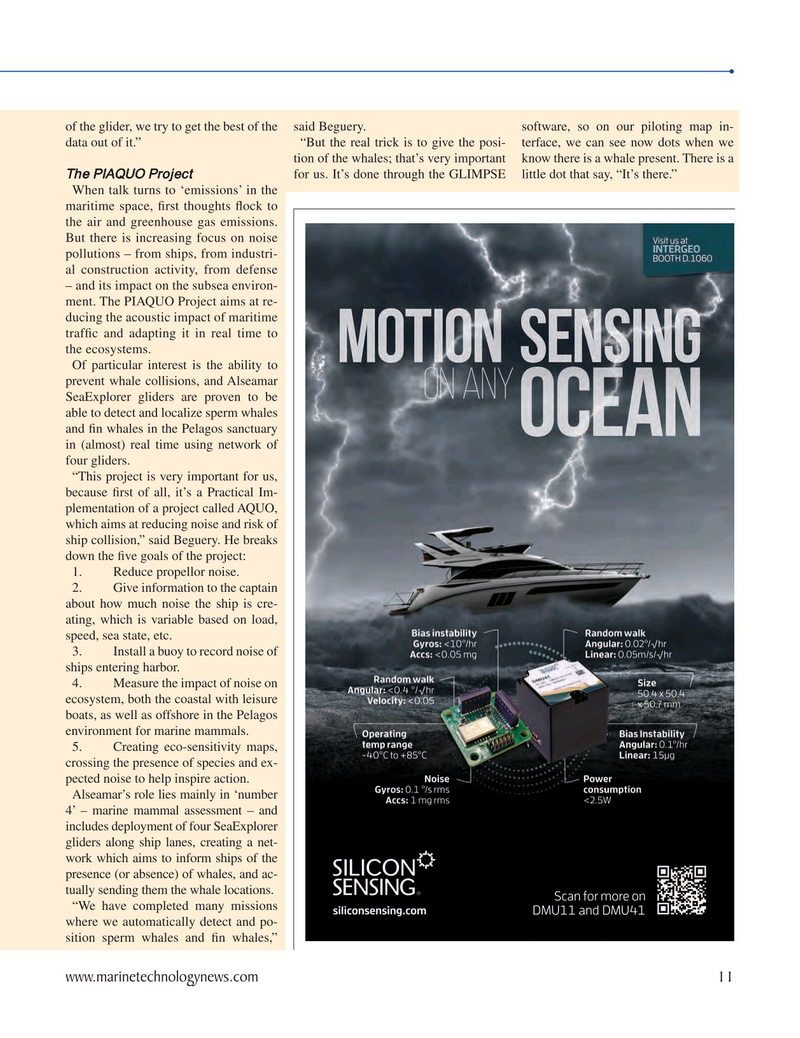
Page 11: of Marine Technology Magazine (September 2023)
Read this page in Pdf, Flash or Html5 edition of September 2023 Marine Technology Magazine
of the glider, we try to get the best of the said Beguery. software, so on our piloting map in- data out of it.” “But the real trick is to give the posi- terface, we can see now dots when we tion of the whales; that’s very important know there is a whale present. There is a
The PIAQUO Project for us. It’s done through the GLIMPSE little dot that say, “It’s there.”
When talk turns to ‘emissions’ in the maritime space, ? rst thoughts ? ock to the air and greenhouse gas emissions.
But there is increasing focus on noise pollutions – from ships, from industri- al construction activity, from defense – and its impact on the subsea environ- ment. The PIAQUO Project aims at re- ducing the acoustic impact of maritime traf? c and adapting it in real time to the ecosystems.
Of particular interest is the ability to prevent whale collisions, and Alseamar
SeaExplorer gliders are proven to be able to detect and localize sperm whales and ? n whales in the Pelagos sanctuary in (almost) real time using network of four gliders.
“This project is very important for us, because ? rst of all, it’s a Practical Im- plementation of a project called AQUO, which aims at reducing noise and risk of ship collision,” said Beguery. He breaks down the ? ve goals of the project: 1. Reduce propellor noise. 2. Give information to the captain about how much noise the ship is cre- ating, which is variable based on load, speed, sea state, etc.
3. Install a buoy to record noise of ships entering harbor. 4. Measure the impact of noise on ecosystem, both the coastal with leisure boats, as well as offshore in the Pelagos environment for marine mammals. 5. Creating eco-sensitivity maps, crossing the presence of species and ex- pected noise to help inspire action.
Alseamar’s role lies mainly in ‘number 4’ – marine mammal assessment – and includes deployment of four SeaExplorer gliders along ship lanes, creating a net- work which aims to inform ships of the presence (or absence) of whales, and ac- tually sending them the whale locations.
“We have completed many missions where we automatically detect and po- sition sperm whales and ? n whales,” www.marinetechnologynews.com 11
MTR #7 (1-17).indd 11 10/3/2023 2:17:33 PM

 10
10

 12
12
